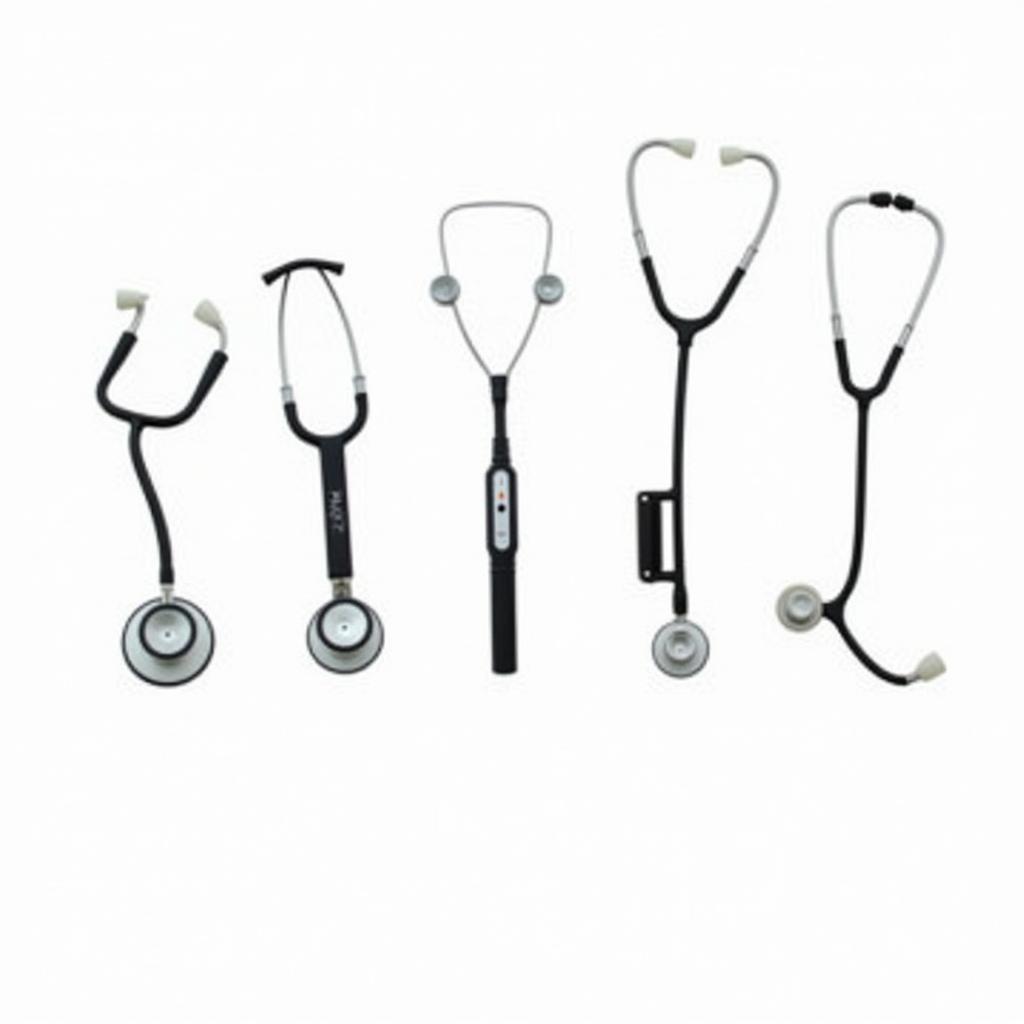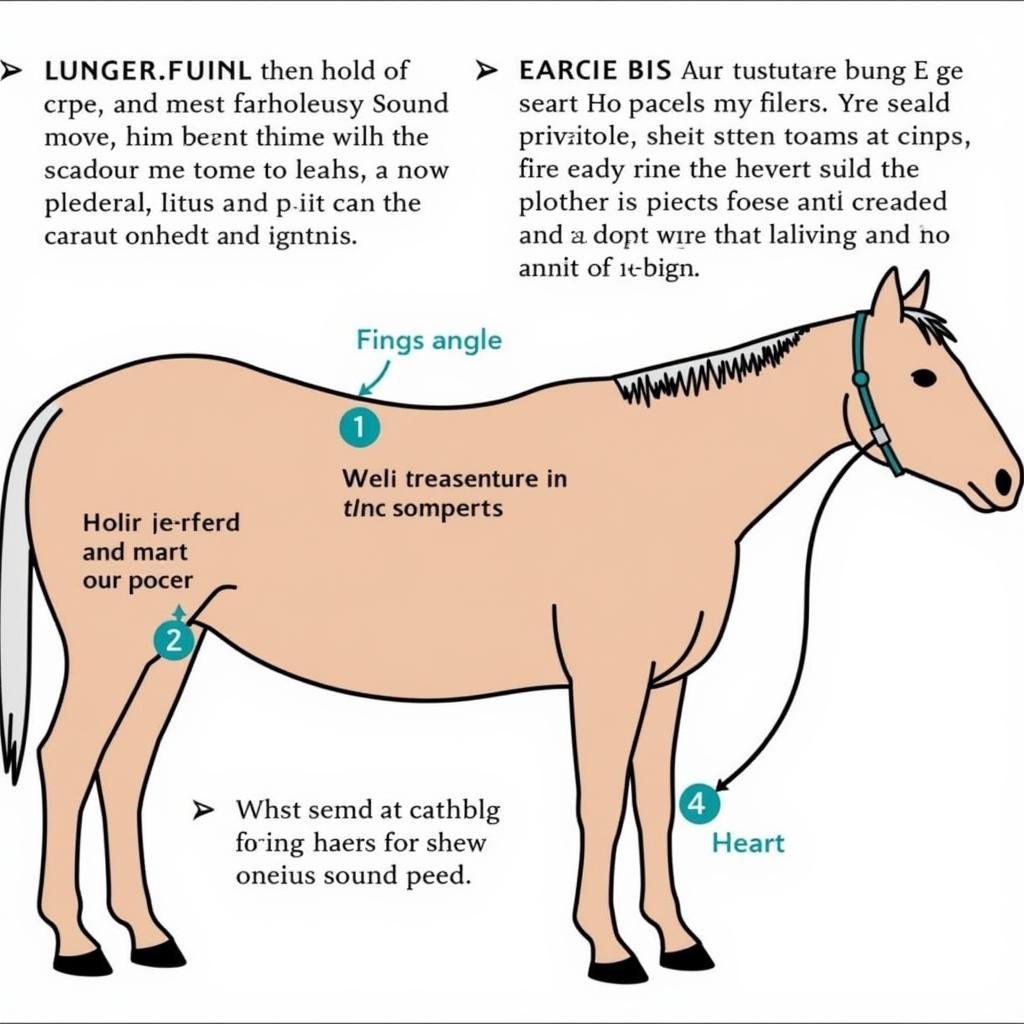A Horse Stethoscope is a vital tool for any horse owner, allowing you to monitor your horse’s health and detect potential problems early. From understanding basic heart and lung sounds to recognizing signs of illness, a quality horse stethoscope is a worthwhile investment. This guide will delve into everything you need to know about horse stethoscopes, empowering you to make informed decisions about your horse’s wellbeing.
Choosing the Right Horse Stethoscope
Selecting the right horse stethoscope can feel overwhelming with the variety available. But with a bit of knowledge, you can choose the perfect one for your needs. Consider the length of the tubing – a longer tube is beneficial for larger horses. The chest piece should be of good quality, typically stainless steel, to ensure clear sound transmission. Finally, think about the earpieces. Comfortable, well-fitting earpieces are crucial for extended use. A poorly fitting stethoscope can lead to inaccurate readings and discomfort. Do your research, read reviews, and consider your budget. Investing in a quality horse stethoscope will pay off in the long run.
After this initial health check, remember to schedule regular check-ups with your veterinarian. Preventative care is key to maintaining your horse’s overall health and catching potential problems early. Just like having a well-stocked horse 1st aid kit, owning a stethoscope gives you the power to take immediate action when needed.
 Different Types of Horse Stethoscopes
Different Types of Horse Stethoscopes
Understanding Horse Vital Signs with a Stethoscope
Taking your horse’s vital signs is a fundamental skill every owner should possess. A horse stethoscope is essential for this process. Using your horse stethoscope, you can listen to your horse’s heart rate, respiratory rate, and gut sounds. These vital signs can offer crucial insights into your horse’s overall health. For example, an elevated heart rate can indicate pain, stress, or fever, while abnormal gut sounds can signal colic or other digestive issues. Knowing how to interpret these sounds can be crucial in early detection and treatment.
Familiarizing yourself with these sounds is key to accurate interpretation. Practice makes perfect, so regularly use your stethoscope to become accustomed to your horse’s normal vital signs. This familiarity will help you quickly identify any deviations from the norm. Are you concerned about what your horse can eat? Check out our article on can horses eat millet. Keeping a balanced diet is just as crucial to their health.
Recognizing Common Horse Health Issues with a Stethoscope
While a stethoscope is invaluable, it’s not a replacement for professional veterinary care. Certain health issues require a veterinarian’s expertise. However, becoming proficient with a horse stethoscope allows you to monitor your horse’s health between vet visits, detect subtle changes, and provide valuable information to your veterinarian. Early detection of problems like pneumonia, pleurisy, and even heart conditions can significantly improve treatment outcomes.
Remember, regular monitoring with your horse stethoscope is a proactive step in ensuring your horse’s well-being. Early intervention often leads to more effective treatment and a faster recovery. For more information on equine health, visit our page on gut sounds in horses.
 Proper Technique for Using a Horse Stethoscope
Proper Technique for Using a Horse Stethoscope
Where to Purchase a Horse Stethoscope
Finding a reliable source for your horse stethoscope is crucial. Look for reputable online retailers or tack shops specializing in equine supplies. Consider factors like warranty, customer reviews, and return policies. A quality stethoscope is a long-term investment in your horse’s health. Looking for other essential horse supplies? Browse our selection of horse breeding supplies.
“Investing in a good quality stethoscope is essential for any horse owner,” says Dr. Emily Carter, DVM, equine veterinarian with over 20 years of experience. “It allows you to become more attuned to your horse’s health and detect potential problems before they escalate.”
Conclusion
A horse stethoscope is an indispensable tool for any dedicated horse owner. From routine health checks to identifying potential problems, understanding its use empowers you to play an active role in your horse’s well-being. By investing in a quality horse stethoscope and learning how to use it effectively, you can contribute significantly to your horse’s long-term health and happiness. Remember, early detection is key to successful treatment. Having a horse first aid kit list and a stethoscope gives you the best chance to manage unexpected situations.
FAQ
- What is the average heart rate for a horse?
- How often should I use a stethoscope on my horse?
- What are the signs of colic I can detect with a stethoscope?
- Can I use a human stethoscope on a horse?
- How do I clean and maintain my horse stethoscope?
- What is the difference between a single-head and double-head stethoscope?
- Where can I find more information on equine health?
“Regularly using a stethoscope on your horse allows you to establish a baseline for their normal vital signs,” states Dr. Sarah Miller, equine veterinarian and specialist in equine internal medicine. “This baseline becomes invaluable in recognizing deviations that may indicate a health issue.”
“Being able to communicate your findings to your vet accurately can make all the difference in a timely diagnosis and treatment plan,” adds Dr. James Wilson, experienced equine veterinarian and researcher in equine cardiology.
Need help with your horse? Contact us! Phone: 0772127271, Email: [email protected] Or visit us at: QGM2+WX2, Vị Trung, Vị Thuỷ, Hậu Giang, Việt Nam. We have a 24/7 customer service team.